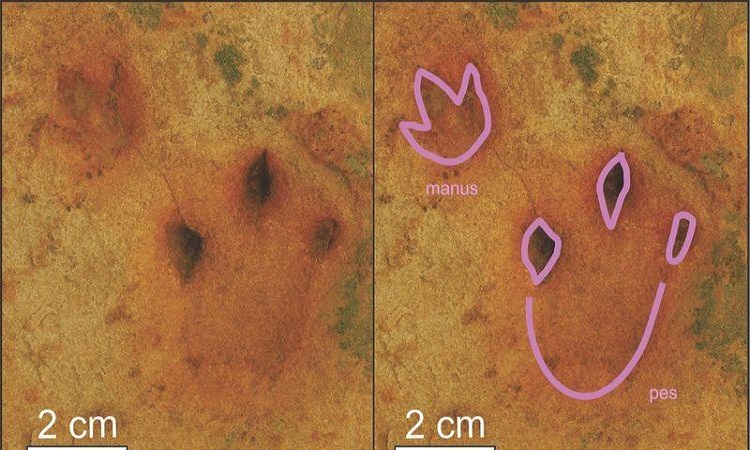In the Karoo Desert in South Africa, researchers have found 25 footprints of dinosaurs (and other animals) formerly living on a “Land of Fire”.
The Karoo region contains huge amounts of basalts, reflecting the volcanic floods that occurred on the former Gondwana supercontinent before it broke up, about 180 million years ago. Researchers have been studying these lands for decades to try to understand this major episode. It is indeed the cause of a vast mass extinction, particularly in the oceans.
Emese M. Bordy, a sedimentologist at the University of Cape Town, takes a “geologist” look at this ancient Earth period. She is also interested in the forms of life that could potentially have lived in the region at that time.
Examining pictures taken in the 1960s in the north of the Karoo basin, she noticed an animal print imprinted on the floor of a farm. On the advice of a historian, she then found with her team the owner of the premises who gave permission to begin excavations.
25 fingerprints in total
After a few weeks, the researchers not only found the first fingerprint, but they also discovered many more. According to them, there are at least 24, divided into five tracks printed on the ground 183 million years ago.
According to their publication in the journal PLOS ONE, these footprints were left by at least three different types of animals. Some were made by theropod dinosaurs (carnivores) and others by small quadruped herbivores.
“Less well-preserved tracks are more difficult to interpret,” notes the researcher. “But the ones we studied seem to have been potentially created by synapsids, a group of reptiles considered to be the ancestors of mammals.”
An increasingly infernal landscape
This new discovery gives us a rare glimpse of life in this hostile environment at the start of the Jurassic. If intense volcanic activity did dominate the region, life seemed to have adapted rather well. These footprints were indeed found between two old layers of lava. This suggests that during quieter periods, between volcanic eruptions, the environment and life recovered.
“For short periods, the streams flowed again, the sun shone and the animals, among them the dinosaurs, grazed and hunted,” confirms the researcher. “This is evidenced by the footprints we found, but also by the plant remains and sediment deposits that we analyzed”.
However, if life seems to have actually survived this intense volcanic activity, this resilience only lasted for a time. For the researcher, these animals were perhaps even the last to be able to frequent the region. A little later, it found itself completely submerged by lava.




